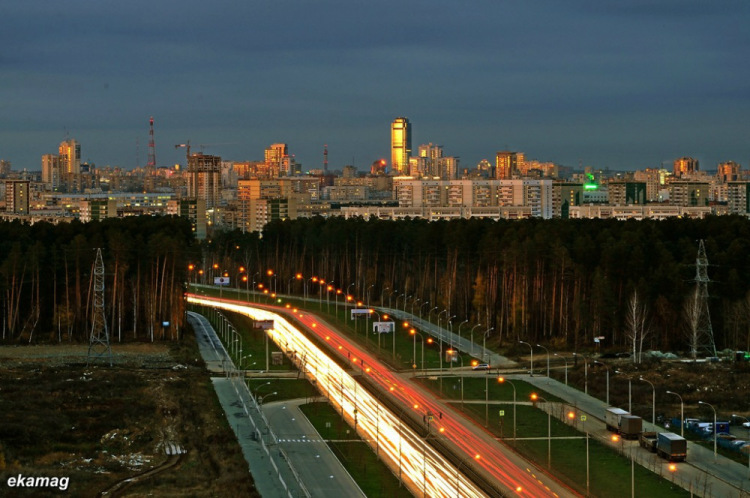
Yekaterinburg from the windows of Academicheski neighborhood. Image courtesy of: Vladimir Zadumin
Early in November a news report appeared on the official site of Yekateriburg city hall about a technical consultation that took place, on the topic of the new tramway line that’s being designed to Akademicheskiy neighborhood. The report contained several details that are worthy of analysis. It was not stated explicitly in the article of course but the new line is likely to have features that would cause plenty of troubles for the residents of Akademicheskiy and South-West neighborhoods. Firstly during the construction phase and then, most importanly, in terms of how transit service would have to be planned along this new line.
The first problem lies in the position that the new line is going to take in the profile of de Gennina and Serafimy Deryabinoy streets. De Gennina street was initially designed to have the tram running on the east side of the street profile.
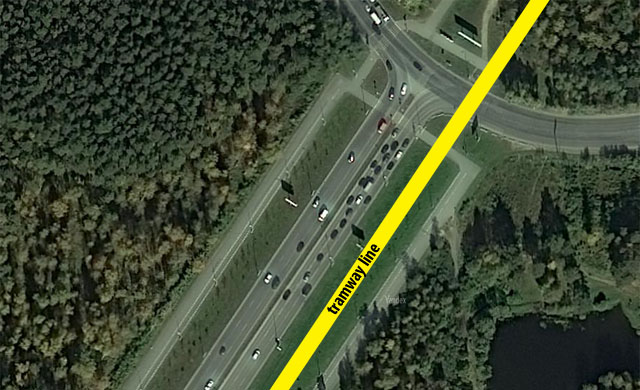
Initial position of the tramway line
Now it seems that the tramway line would take another position. Beginning from Vonsovsky street tramway tracks would run in the center median of the street. To make that possible the center median would have to be widened. That would create a need to reconstruct the whole east carriageway of the street.
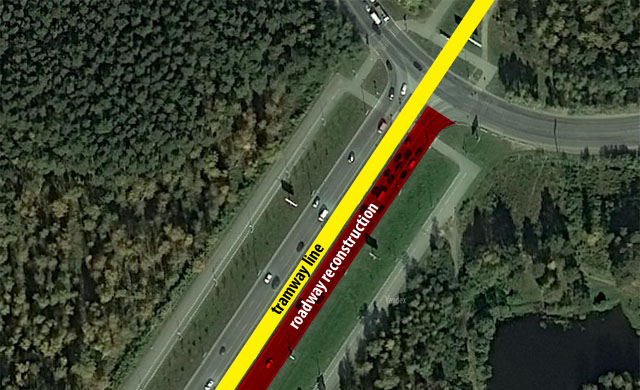
New position of the tramway line
Nearly 3 kilometers of streets would have to be reconstructed that way.
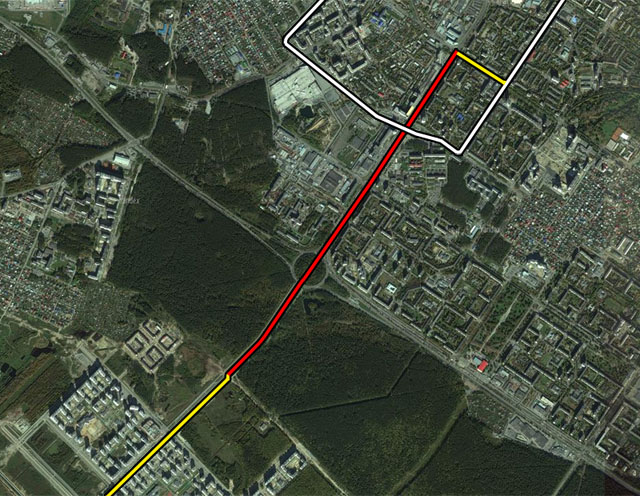
Red shows the segment where the carriageway would have to be reconstructed. White shows the existing tramway network
Not only this solution raises the costs of the project, but it also creates lots of traffic problems for the residents of Akademicheskiy and South-West neighborhoods during the construction phase. East carriageway is not going to be closed of course, but it will have to be narrowed for a long period of time which would create a bottleneck and increase congestrion in the area.
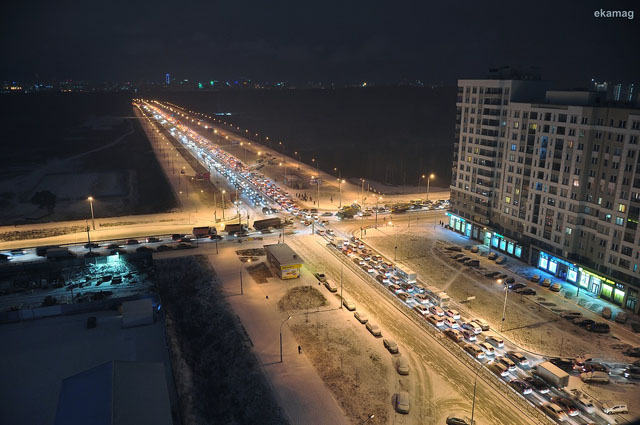
Traffic jam on the road from Akademicheskiy to the city center. Image courtesy of: Vladimir Zadumin
Why was that solution chosen? The designers and the construction committee of the city hall want to run the tramway line along Serafimy Deryabinoy street all the way to Shaumyana street where it would turn east to connect to the existing tramway network on the intersection of Shaumyana and Belorechenskaya streets. Geometrically this design is only possible with the tramway line running in the center median.
The second problem also lies in the chosen layout. The tramway line will be more than 1 kilometer longer than is minimally necessary to connect to the existing network. This also raises the costs.
The third problem is less obvious but much more serious. It lies in the way the transit services would have to be designed along this new line. More specifically it lies in the branching of the line that will take place on Belorechenskaya-Shaumyana intersection.
In a motorist’s world road branching does not pose a problem. One can take either way and be done with it. For public transport branching is highly undesirable.
Let’s take a hypothetical situation. A tramway route is laid out from the center of Yekaterinburg to the South-West and Akademicheskiy neighborhoods at a frequency of 10 minutes. When the line branches, if we divide the vehicles equally between two destinations the frequency on each branch would drop to 20 minutes. For the residents of Akademicheskiy the number of useful trams going to their neighborhood would be reduced by a half.
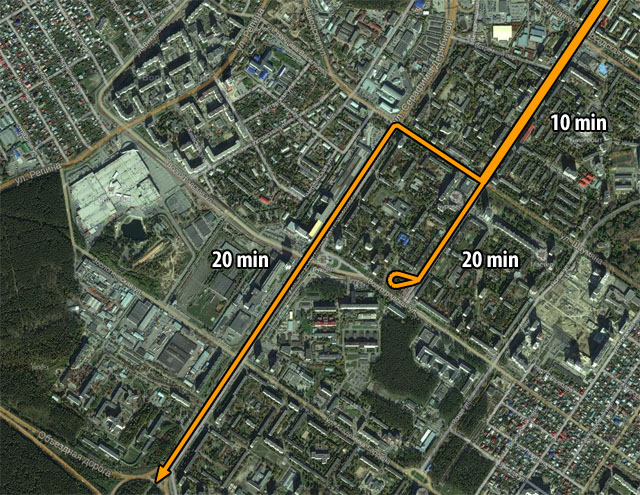
How branching affects frequency of service
Most of the trams could have been rerouted to Akademicheskiy, but the terminal stop on Volgogradskaya-Belorechenskaya intersection serves to major medical institutions – City Clinical hospital №1 and Regional Clinical hospital №40. For that reason cutting service here is really not a desirable option.
The situation is worsened by the fact the it would be impossible to create a stop on the new line on the intersection of Volgogradskaya and Serafimy Deryabinoy. This intersection is grade-separated and the tramway would run in the lower level thus making it impossible to create a stop.
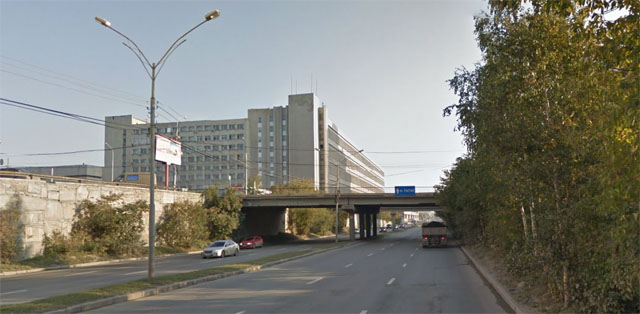
It will be impossible to put a tramway stop here
The next stop after Shaumyana on the new line will be placed only on the intersection with Bardina street. As a result a whole area of Volgogradskaya street including the medical complex falls out of tramway line’s pedestrian shed.
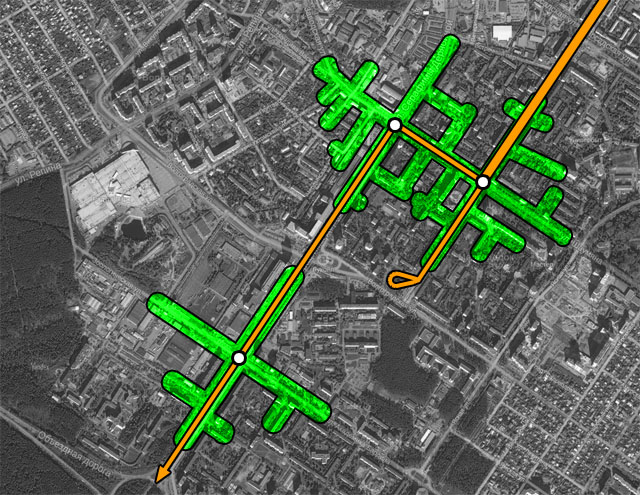
5-minute walk areas around the stops of the new line
This is just a direct consequence of the line’s layout on the future transit service. It’s worth mentioning that this layout would also make it impossible to transfer to another line on Volgogradskaya street. Taking into account that the tramway line on Volgogradskaya is planned to be extended to the east, this is a major drawback.
All in all the line as it is planned will be costly and will not provide for effective transit service in the future.
Are there other options?
There is a way to build this line less expensive, less troublesome for residents and more suited to effective transit service. That is to build the line along the east side of de Gennina and Serafimy Deryabinoy streets and connect it to the existing network on Volgogradskaya.
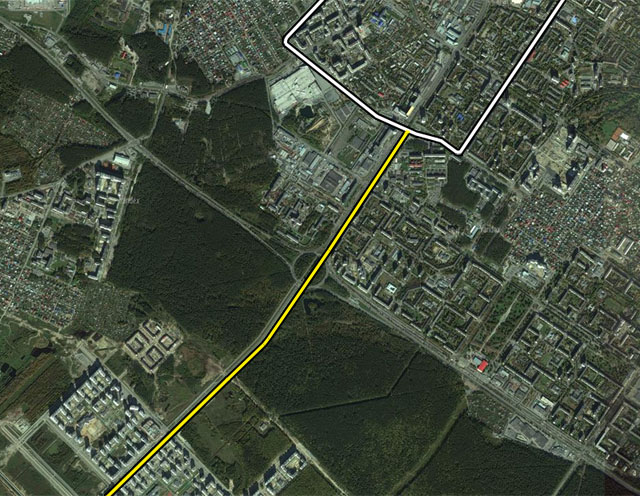
Alternative layout of the new line
Why is this better? Firstly, on de Gennina street the line would be positioned where it’s supposed to be – on the east side of the street profile. Building tracks on a free stretch of land is much easier than starting a full-scale roadway reconstruction. No obstructions for traffic on the period of construction would be caused.
Secondly, on Serafimy Deryabinoy street there would be no need to rebuild the main roadway. Only the side access road would be affected. The tramway line would be placed between this sideroad and the main road.
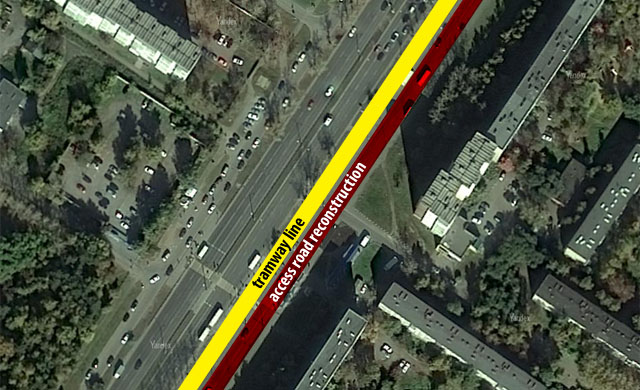
Alternative layout between Objezdnaya and Bardina
Thirdly, more than a kilometer of tracks would not have to be built at all because the new line would connect to the existing network by the shortest path. To make this possible a sideroad between Bardina and Volgogradskaya would have to be removed.
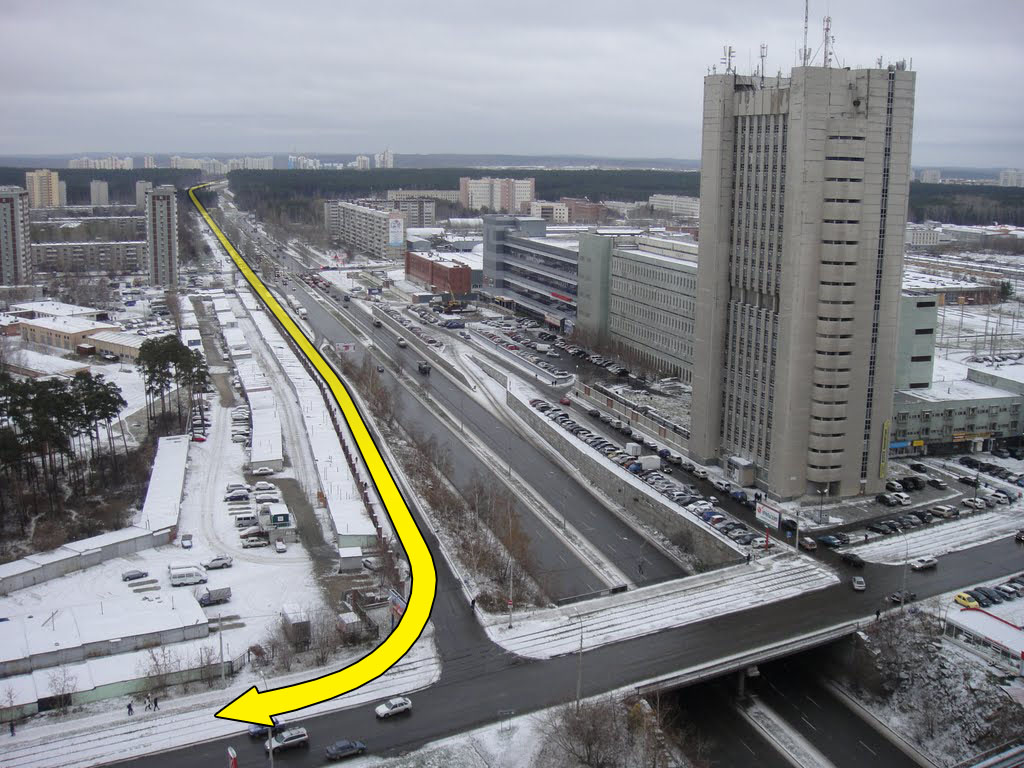
Connection of the new line with existing tracks on Volgogradskaya street. Inage courtesy of: Sergej Likhota
It is important to note that access to all the land uses along the sideroad would be preserved. Only the entrance to the garage complex would have to be moved closer to Bardina street.
The first objection to this alternative layout: removal of the sideroad would cause troubles for motorists. It is true. However, since a new road was recently opened to the west of that sideroad between Volgogradskaya and Zoologicheskaya, removal of this sideroad would not be a catastrophe.
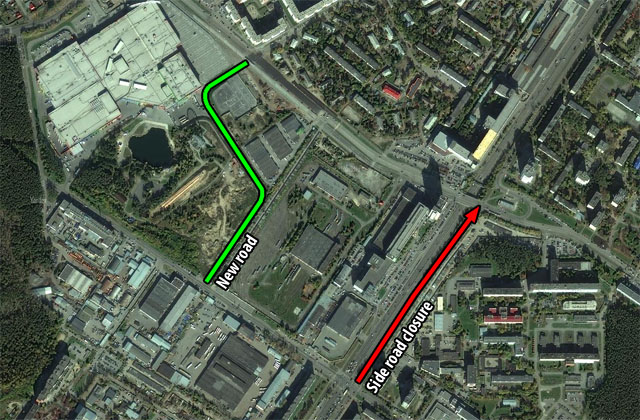
Roads between Volgogradskaya and Bardina
Second objection: it would be impossible to turn from the new line to the west because it is impossbile to install a switch on the bridge.
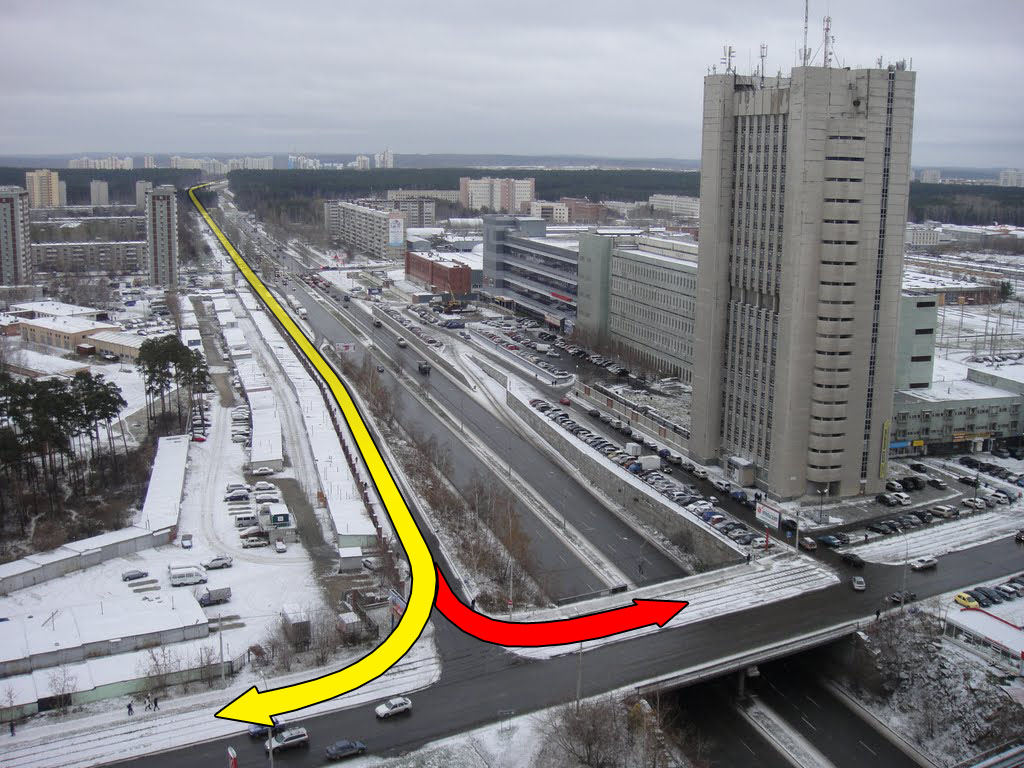
Impossible turn to VIZ neighborhood. Image courtesy of: Sergej Likhota
Earlier I have been a proponent of running several tramway routes from Akademicheskiy. However, now I think it wouldn’t be wise to do that because it will create another branching problem.
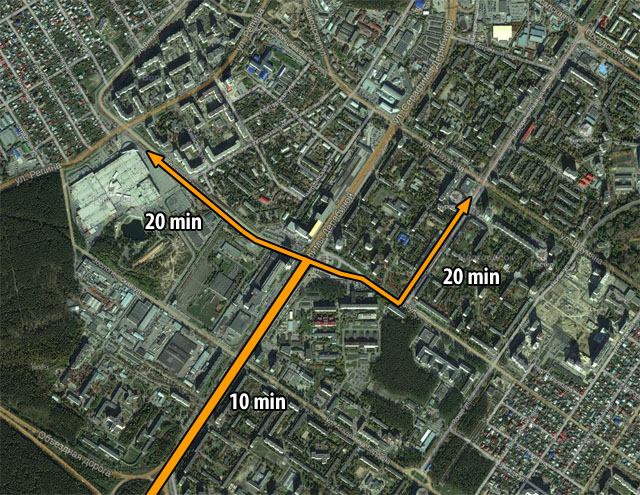
Branching routes from Akademicheskiy would cause the same frequency problem
A more adequate solution would be to have a route from terminal stop on Volgogradskaya-Belorechenskaya to VIZ (like the existing route №19) on which one could transfer while travelling from Akademicheskiy. Thus the problem of branching would not occur.
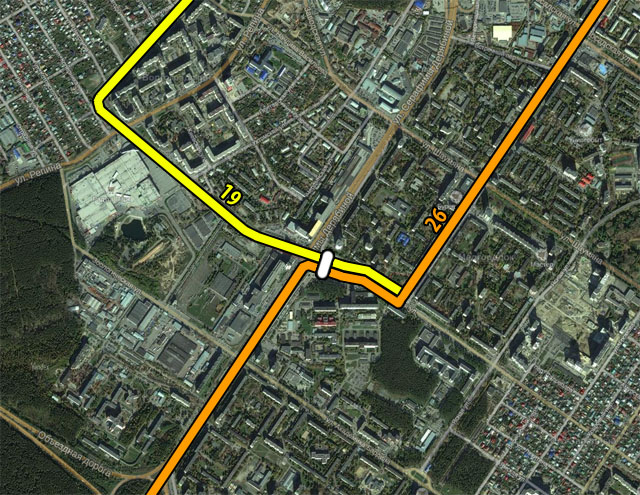
Being able to transfer from one route to another is more important than having two specialized routes in each direction
And finally the fourth and the most important advantage of the alternative layout: it does not force the tramway agency to choose which area to serve better – the medical complex or the Akademicheskiy neighborhood further to the south. Both areas would be covered by the same route (by exetending the existing 26th route and adding more vehicles to it).
What do do?
Since the design process for the new line is still under way, it is not too late to change the plans. If you agree with the arguments above, you could write to Yekaterinburg city hall and suggest to them to change the design.